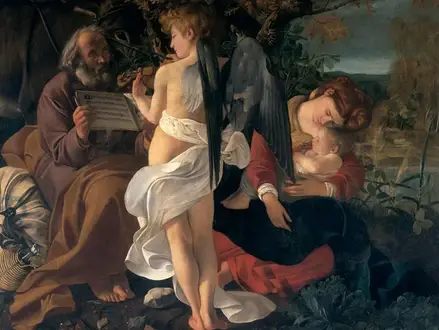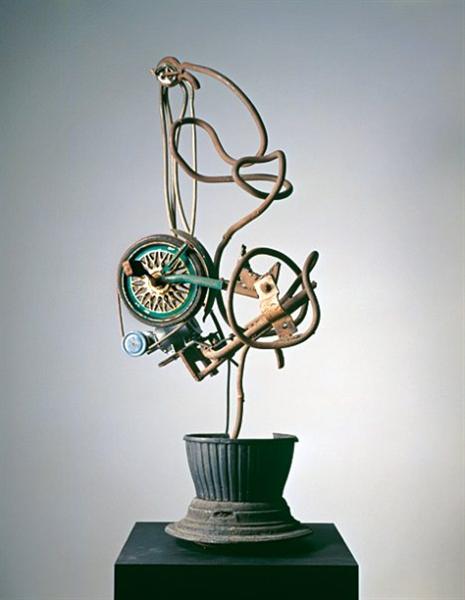Title of Artwork: “Rest on the Flight into Egypt”

Artwork by Caravaggio
Year Created 1597
Summary of Rest on the Flight into Egypt
Michelangelo Merisi da Caravaggio’s painting Rest on the Flight into Egypt (c. 1586 creation) hangs in Rome’s Doria Pamphilj Gallery. Caravaggio’s composition of the Holy Family with an angel playing the viol is unusual, but The Rest on the Flight into Egypt, like the Flight into Egypt, was a popular subject in art.
All About Rest on the Flight into Egypt
Not a single incident in the Bible was used to create this scene; instead, it was inspired by a plethora of stories and legends that developed around the biblical account of how the Holy Family fled to Egypt for safety after being warned that Herod the Great was planning to kill the Christ Child. When Joseph and Mary slowed down in a tree-lined area, the Holy Child ordered the trees to bend down and a spring to spring up so that Joseph could eat from them, and his parents could drink from the water that gushed from the roots. Throughout the ages, this simple tale has grown in complexity.
An angel is playing a hymn to Mary on her violin as she sleeps with the baby Jesus in Caravaggio’s depiction.
The painting’s date of origin has been disputed. This work, along with the Penitent Magdalene, and an unidentified depiction of Saint John the Evangelist, were all painted while Caravaggio was staying with Monsignor Fantino Petrignani, after leaving the workshop of Giuseppe Cesari, according to his contemporary Giulio Mancini. In January of 1594, this is likely to have occurred.
Accepting Mancini’s statement, on the other hand, raises questions. The first thing to note is that none of these three works appeared in Petragnani’s inventory of 1600, despite the possibility that they were painted for a different client. Caravaggio’s angel’s pose, for example, closely resembles the figure of Vice in Annibale Carracci’s Judgement of Hercules, which was completed early in 1596 and widely admired. More seriously, the composition of the painting can be traced back to this earlier work:
Mancini’s testimony is accepted by John Gash, but Peter Robb and Helen Langdon (both 1998) have raised the possibility that it was painted for Cardinal Francesco Maria Del Monte, who made Caravaggio in effect his household artist from around 1595 or 1596. A work of this calibre would be unlikely to be undertaken by the artist unless it was a direct commission from the cardinal (the music held by Joseph is a motet by Flemish composer Noel Bauldeweyn with a text from the Song of Songs dedicated to the Madonna, “How beautiful you are”).
Caravaggio’s first large-scale work, it is both more ambitious and more successful in terms of composition than his earlier work, The Musicians, from around 1595. A few square centimetres of paint is all that Caravaggio used to paint the sky in all of his 80 or so paintings, according to one critic, so this is a rare landscape from this artist, who was always painting inside a prison cell, a tavern, or at night. By the early 17th century, the Pamphilj had acquired the painting. Landscape and glowing tonalities show Caravaggio’s Lombard and Venetian ancestry, respectively. A tranquil moment, more like a gardenscape than a landscape, is depicted here, as is the case with most depictions of the flight to Egypt. Groups of people gather around the ethereal figure of an adolescent angel. Caravaggio’s mother and child grouping, one of many he painted, is among the most delicate and realistic in the canon.
Information Citations
En.wikipedia.org, https://en.wikipedia.org/.























